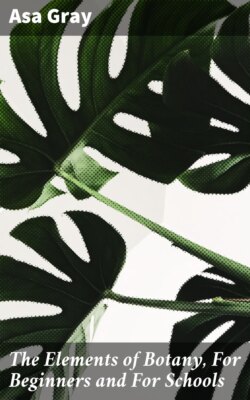Читать книгу The Elements of Botany, For Beginners and For Schools - Gray Asa - Страница 14
На сайте Литреса книга снята с продажи.
Section VII. LEAVES.
ОглавлениеTable of Contents
118. Stems bear leaves, at definite points (nodes, 13); and these are produced in a great variety of forms, and subserve various uses. The commonest kind of leaf, which therefore may be taken as the type or pattern, is an expanded green body, by means of which the plant exposes to the air and light the matters which it imbibes, exhales certain portions, and assimilates the residue into vegetable matter for its nourishment and growth.
119. But the fact is already familiar (10–30) that leaves occur under other forms and serve for other uses—for the storage of food already assimilated, as in thickened seed-leaves and bulb-scales; for covering, as in bud-scales; and still other uses are to be pointed out. Indeed, sometimes they are of no service to the plant, being reduced to mere scales or rudiments, such as those on the rootstocks of Peppermint (Fig. 97) or the tubers of Jerusalem Artichoke (Fig. 101). These may be said to be of service only to the botanist, in explaining to him the plan upon which a plant is constructed.
120. Accordingly, just as a rootstock, or a tuber, or a tendril is a kind of stem, so a bud-scale, or a bulb-scale, or a cotyledon, or a petal of a flower, is a kind of leaf. Even in respect to ordinary leaves, it is natural to use the word either in a wider or in a narrower sense; as when in one sense we say that a leaf consists of blade and petiole or leaf-stalk, and in another sense say that a leaf is petioled, or that the leaf of Hepatica is three-lobed. The connection should make it plain whether by leaf we mean leaf-blade only, or the blade with any other parts it may have. And the student will readily understand that by leaf in its largest or morphological sense, the botanist means the organ which occupies the place of a leaf, whatever be its form or its function.
